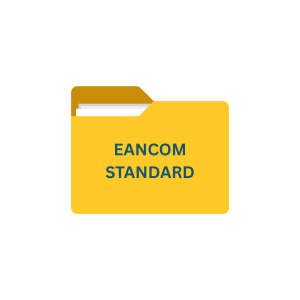Define Integrated EDI
Integrated EDI enables businesses to transmit documents such as purchase orders, invoices, shipping notices, and other transactions electronically, in a standardized format. This includes document mapping, translation, validation, and communication protocols. It integrates with all ERP systems.
Here is the list of 22 benefits of integrated EDI
1. Enhanced Efficiency
Integrated EDI eliminates manual data entry and paper-based processes, reducing human error and increasing operational efficiency.
2. Time-Saving
Automated document exchange speeds up transaction processing, enabling faster order fulfillment, inventory management, and invoice reconciliation.
3. Improved Accuracy
With integrated EDI, data is electronically transmitted without the need for manual intervention, ensuring accurate and reliable information exchange.
4. Cost Reduction
By eliminating paper-based processes, integrated EDI helps reduce printing, postage, and administrative costs associated with traditional document handling.
5. Streamlined Workflow
Integrated EDI enables seamless integration with existing business systems, optimizing workflow and minimizing disruptions.
6. Real-time Visibility
By automating data exchange, integrated EDI provides real-time visibility into transaction statuses, enabling proactive decision-making.
7. Error Detection and Resolution
Integrated EDI systems employ validation rules to identify errors and discrepancies, allowing prompt resolution and preventing costly mistakes.
8. Enhanced Customer Satisfaction
Faster order processing, accurate inventory management, and timely delivery, made possible by integrated EDI, result in improved customer satisfaction levels.
9. Inventory Optimization
Integrated EDI facilitates accurate demand forecasting, enabling businesses to optimize inventory levels, reduce carrying costs, and avoid stockouts.
10. Improved Supplier Relationships
Integrated EDI fosters better collaboration with suppliers by providing seamless order placement, shipment tracking, and invoice reconciliation.
11. Scalability
Integrated EDI systems can accommodate growing business needs, enabling organizations to scale their operations without major disruptions.
12. Reduced Lead Times
Streamlined communication and automated processes through integrated EDI reduce lead times, resulting in faster order cycles.
13. Regulatory Compliance
Integrated EDI ensures adherence to industry-specific regulations and standards, minimizing compliance-related risks and penalties.
14. Error-free Invoicing
Integrated EDI eliminates manual invoice processing, reducing the chances of errors, delays, and invoice disputes.
15. Cash Flow Optimization
With faster invoice processing and reduced cycle times, integrated EDI helps improve cash flow management and working capital efficiency.
16. Data Security
Integrated EDI employs secure protocols and encryption techniques, ensuring the confidentiality and integrity of sensitive business data.
17. Global Reach
Integrated EDI enables seamless communication with international trading partners, facilitating cross-border transactions and expanding market reach.
18. Enhanced Data Analytics
Integrated EDI provides access to rich transactional data, which can be analyzed to gain valuable insights for strategic decision-making.
19. Competitive Advantage
Organizations leveraging integrated EDI gain a competitive edge by improving operational efficiency and offering superior customer service.
20. Reduced Carbon Footprint
By eliminating paper-based processes, integrated EDI contributes to environmental sustainability, reducing the carbon footprint associated with traditional document handling.
21. Easy Integration with E-commerce Platforms
Integrated EDI seamlessly integrates with e-commerce systems, enabling businesses to efficiently manage online orders and customer interactions.
22. Future-readiness
Embracing integrated EDI positions organizations for future advancements in technology and digital transformation, ensuring long-term competitiveness.
Conclusion
Integrated EDI is a transformative technology that brings numerous benefits to businesses, optimizing operations, improving efficiency, and driving growth. From enhanced accuracy and efficiency to improved customer satisfaction and competitive advantage, the advantages of integrated EDI are vast. By embracing this technology, organizations can streamline their supply chain processes, strengthen trading partner relationships, and position themselves for success in the digital era. Embrace integrated EDI and unlock the full potential of streamlined business operations.
Download Integrated EDI Guide
Unlock efficiency and enhance your supply chain with our Integrated EDI Solution—say goodbye to manual processes and multiple systems. Learn all you need to know about Integrated EDI and make an informed choice.
Need Help? Download: EDI Buyers Guide
Unlock the full potential of your supply chain with our comprehensive EDI Buyer's Guide — your first step towards seamless, efficient, and error-free transactions
Frequently Asked Questions
Integrated EDI works by connecting directly with an organization’s internal systems, such as Enterprise Resource Planning (ERP) or Supply Chain Management (SCM) systems, enabling the automated transmission of standardized business documents like invoices, purchase orders, and shipping notices.
Yes, Integrated EDI solutions are often customizable to meet the specific requirements of different industries and businesses, ensuring seamless integration with existing workflows.
No, Integrated EDI solutions are scalable and can be implemented by businesses of all sizes. Small and medium-sized enterprises (SMEs) can also benefit from the efficiency and automation that Integrated EDI provides.
Yes, Integrated EDI systems typically support various document formats and standards, such as EDIFACT, ANSI X12, and XML, ensuring compatibility with diverse trading partners.
Commport Integrated EDI solutions implement encryption, secure protocols, and authentication mechanisms to ensure the confidentiality and integrity of transmitted data, adhering to industry-standard security practices.





